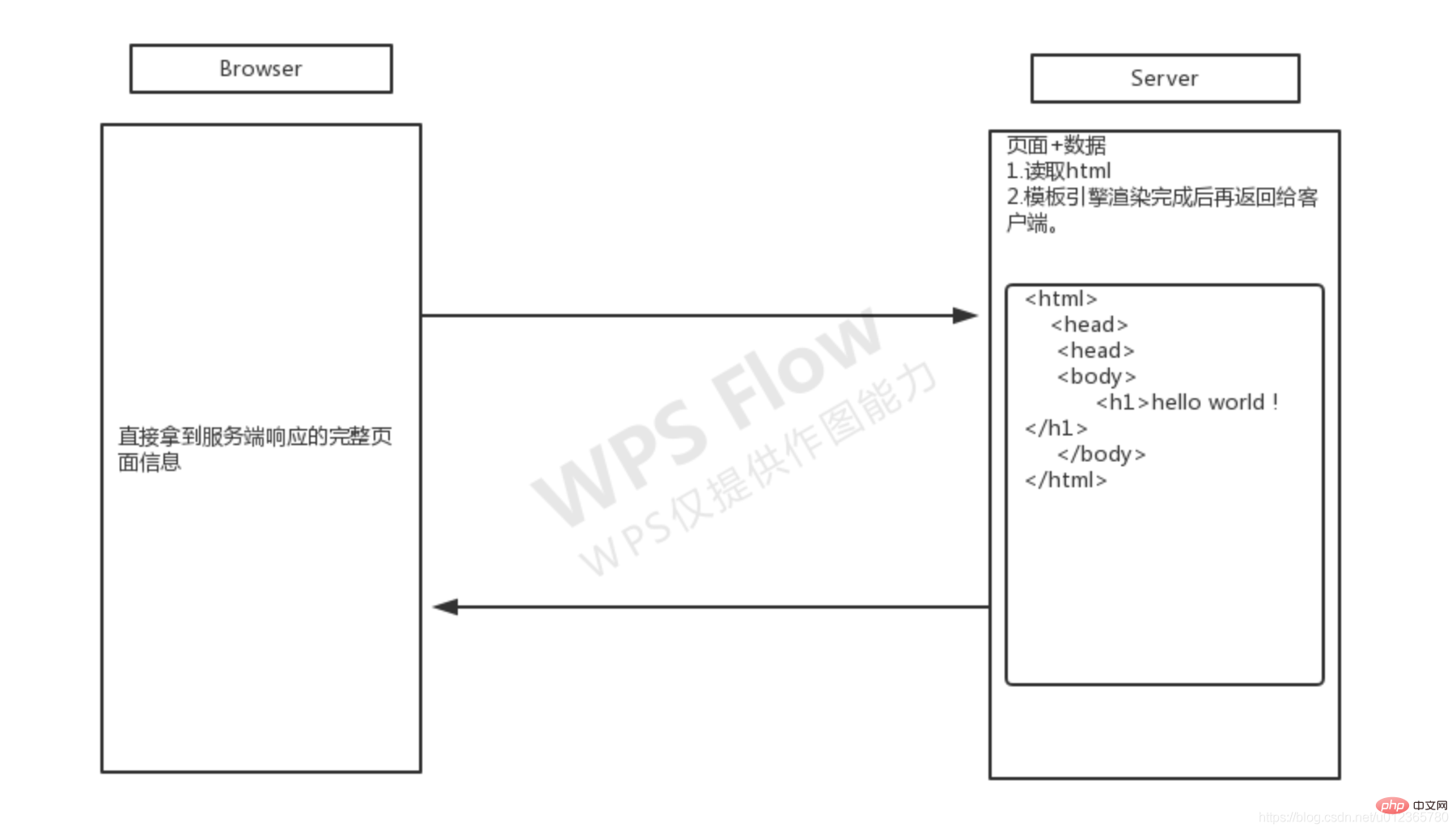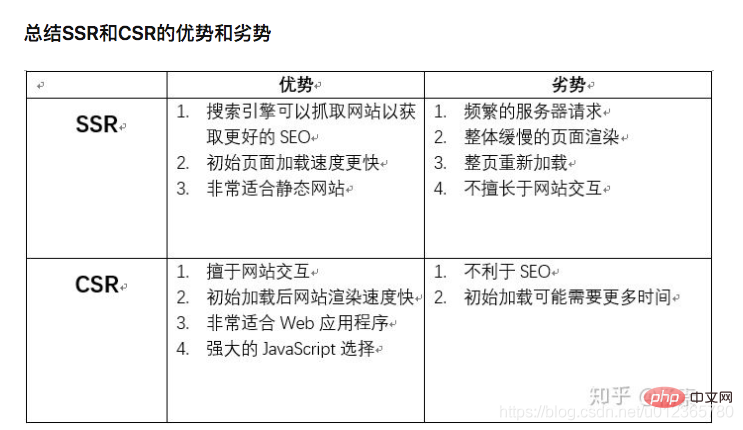Home >Web Front-end >Front-end Q&A >An in-depth analysis of client-side rendering (CSR) and server-side rendering (SSR)
An in-depth analysis of client-side rendering (CSR) and server-side rendering (SSR)
- WBOYWBOYWBOYWBOYWBOYWBOYWBOYWBOYWBOYWBOYWBOYWBOYWBforward
- 2022-01-24 17:46:162672browse
This article brings you knowledge about client-side rendering CSR and server-side rendering SSR. I hope it will be helpful to everyone.

Preface: Brief introduction to SEO
- SEO (Search Engine Optimization) refers to search engine optimization, in layman’s terms It is to summarize the search ranking rules of search engines and reasonably optimize the website to improve the ranking of your website in search engines such as Baidu or Google, so that more users can access your website.
Client-side rendering:
-
Client-side rendering (Client Side Render) is when the user accesses the website through a URL request. The server returns an HTML document, and then the browser parses and renders the display page. The js, css, image files, etc. need to send a request to the server again to request data loading.

Server-side rendering:
-
corresponds to client-side rendering It is server-side rendering (SSR). From the server side, all front-end rendering display pages are a string of strings, including html, js, and css. Server-side rendering is a processed html character. The string is returned to the client, and in the returned HTML string, the server-side knowledge directly writes the server-side data and other information that needs to be displayed in the HTML into this HTML string so that the client browser can directly process it. show.

Here is a simple example of server-side rendering:
import Koa from 'koa'
import Router from 'koa-router'
const app = new Koa()
const router = new Router()
router.get('/', async (ctx) => {
ctx.body = `
<title>服务端渲染返回</title>
<h1>Hello World!</h1>
`
})
app.use(router.routes())
app.listen(3000, () => {
console.log("koa server listening on 3000")
})
Returned through the above server The html string is directly displayed on the client as a corresponding web page, so that the client does not have to repeatedly request the server to load data

server Rendering VS client-side rendering
- The biggest difference between CSR and SSR is that when CSR renders the page, the server directly returns HTML to the client for rendering and display, while SSR hands over the rendering of the page. Provided server-side JS execution.
- **Disadvantages of traditional CSR=> **
- Since HTML is directly returned to the client for rendering, the client needs to send AJAX to the server multiple times Pulling the JS code for execution will slow down the loading speed of the first screen of the page.
- It is not friendly to SEO, because our client pulls JS from the server for execution, and the search engine crawler can only recognize the content of the html structure, but cannot recognize the js code.
Therefore, the emergence of SSR can solve the shortcomings of traditional CSR, because at this time, the client request will get the HTML rendered by our server, which is enough for SEO. friendly.

For more programming-related knowledge, please visit: Introduction to Programming! !
The above is the detailed content of An in-depth analysis of client-side rendering (CSR) and server-side rendering (SSR). For more information, please follow other related articles on the PHP Chinese website!

